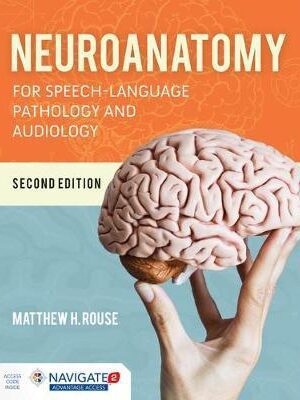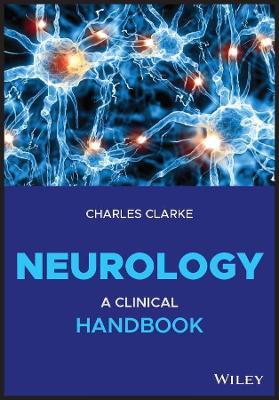Atlas of EEG, Seizure Semiology, and Management 3rd Edition
Atlas of EEG, Seizure Semiology, and Management Third Edition:
Atlas of EEG, Seizure Semiology, and Management is a comprehensive yet concise textbook with a focus on practical use of EEG and clinical neurology in the diagnosis and management of epilepsy. It begins with the physiological foundation of EEG, physics and electronics of EEG generation and
recording, and technical details of EEG performance. Major sections then discuss seizure and epilepsy diagnoses, normal and abnormal EEG patterns correlated with clinical scenarios, guides to differential diagnosis of seizures, guides to medical and nonmedical management, and lastly teaching case
studies. For this edition, there is a separate pediatric EEG and epilepsy section, in addition to discussion of pediatric aspects throughout the rest of the text. Revisions and additions have been made to keep up with the rapid pace of advancement in EEG and epilepsy.
This new third edition is authored and edited by four senior faculty of Vanderbilt University Hospital and Vanderbilt Children’s Hospital, all trained and board certified in EEG and Clinical Neurophysiology. These experts use their daily experience treating epilepsy in a busy academic medical center
to provide a robust core of EEG and epilepsy knowledge to healthcare professionals who diagnose and manage epilepsy, and who are seeking to develop and enhance their knowledge of EEG performance and interpretation.
New in this edition:
· Compares the new epilepsy classification schemes with the old
· Updated status epilepticus management, with new tables and flowcharts
· New interpretations for a variety of EEG patterns, some of which have controversial implications
Additional ISBNs:
∗ eText ISBN: 0197543049, 978-0197543047, 9780197543047
- See additional information on the Amazon.
More Details
Part 1 Introduction to EEG
1.1 Overview of Seizures and Epilepsy
Seizures and Epilepsy
Classifications
1.2 Role of EEG in Diagnosis and Management
Routine EEG
Video-EEG Monitoring
Intracranial Techniques
Part 2 Basic Science of EEG
2.1 Physiology
Membrane Physiology
Resting Membrane Potential
Postsynaptic Potentials
Action Potential Generation and Termination
Action Potential Propagation
2.2 Electronics
Circuit Elements
Amplifiers
Circuit Laws
Computers and Digital Data
Signal Processing
Filters
Electrodes
Electrode Theory
Digital Displays
2.3 Generators of EEG Activity
Generators of Normal EEG Activity
Generation of Abnormal EEG Activity
Part 3 Seizure Semiology and Classification
3.1 Definitions
3.2 Overview of Seizure Semiology
Motor Manifestations
Sensory Phenomena
Autonomic Manifestations
Experiential Phenomena
3.3 Seizure Classification
3.4 Seizure Semiology by Seizure Type and Seizure Localization
Focal Onset Seizures by Type
Generalized-Onset Seizures
Unknown-Onset Seizures
Part 4 Epilepsy Classification and Epileptic Syndromes
4.1 Epilepsy Classification
Old Classification
New Classification
4.2 Select Epilepsy Syndromes Seen in Adulthood
Generalized Epilepsy Syndromes: Idiopathic Generalized Epilepsies
Focal Epilepsy Syndromes
Epilepsy Syndromes with Both Focal and Generalized Seizures
Part 5 Clinical EEG
5.1 Terminology and Definitions
5.2 EEG Basics
Performance
EEG Analysis
Video-EEG and Long-Term EEG Monitoring
5.3 Normal EEG
Overview
Normal Adult EEG
Variants and Transients
SREDA
Noncerebral Potentials
5.4 Abnormal Nonepileptiform EEG
Overview
Slow Abnormalities
Amplitude Abnormalities
Periodic Patterns
Coma and Electrocerebral Silence
Critical Care Terminology
5.5 Abnormal EEG in Epilepsy: Interictal Epileptiform and Ictal Discharges
EEG Role in the Diagnosis and Management of Epilepsy
Focal Versus Generalized EEG Patterns
Patterns of EEG Activity in Focal Epilepsy
Patterns of EEG Activity in Generalized Epilepsy
5.6 Status Epilepticus
Epidemiology
Definition and Classification
Convulsive Status Epilepticus
Nonconvulsive Status Epilepticus
5.7 Advanced Techniques
Intraoperative Electrocorticography (ECoG)
Critical Care Monitoring
Encephalopathy in Hospitalized Patients
Quantitative EEG
Intraoperative Monitoring
Part 6 Pediatric EEG
6.1 Normal Pediatric EEG
Overview
Neonatal EEG Methodology
Physiological State of Neonates
Normal Neonatal EEG
Maturation of the Posterior Dominant Rhythm
Posterior Slow Waves of Youth
Hyperventilation
Drowsiness
Sleep Patterns
6.2 Abnormal Pediatric EEG
Neonatal EEG Abnormalities
Maturation
Epileptiform Activity
6.3 Pediatric Seizures
Neonatal Seizures
Epileptic Encephalopathy
Absence Epilepsy
Juvenile Myoclonic Epilepsy
Self-Limited Focal Epilepsies of Childhood
Landau-Kleffner Syndrome (LKS)
Continuous Spike-and-Wave During Sleep
Atypical Benign Partial Epilepsy
Febrile Seizures
Part 7 Differential Diagnosis
7.1 Overview
7.2 Psychogenic Nonepileptic Events
Clinical Presentations
EEG Manifestations
7.3 Syncope
Overview
Causes of Syncope
EEG Manifestations of Syncope
Differentiation of Syncope from Seizure Activity
7.4 Other Disorders Mistaken for Seizures
Movement Disorders
Sleep Disorders
Behavioral Disorders
Breath-Holding Spells
Startle
Cough Syncope
Transient Ischemic Attack
Transient Global Amnesia
Peak Toxicity of ASMs
Drug-Induced Encephalopathy
Part 8 Seizure Management
8.1 Management of Pediatric Seizures
Medical Management Issues in the Pediatric Population
Dietary Management in the Pediatric Population
Surgical Management in the Pediatric Population
Comorbidities in Pediatric Epilepsies
Prognosis in Pediatric Epilepsies
8.2 Management of Adult Seizures/Epilepsy
If and When to Initiate Therapy
Considerations in Therapy
Dosing for First-Line Therapy
Drug-Level Monitoring
Second-Line Therapy
Drug Interactions
Success of ASM Therapy
Autoimmune Epilepsy
Discontinuation of Medical Therapy
8.3 Management of Status Epilepticus
Treatment and Prognosis of Status Epilepticus
Medications Used for Status Epilepticus
8.4 Nonmedical Treatment
Neurostimulation Techniques
Dietary Treatment of Epilepsy
8.5 Surgical Treatment of Epilepsy
Historical Perspective
Refractory (Drug-Resistant) Epilepsy
Focal Epilepsies
Patient Example
Efficacy of Epilepsy Surgery
Epilepsy Surgery Workup
ASM Management After Surgery
8.6 Comorbidities
Anxiety and Depression
Migraine
Substance Use and Abuse
Cardiovascular Disease
Cognitive Disturbance
Sleep Disorders
Social Difficulties
8.7 Quality of Care Standards and Counseling
Quality of Care Standards
Counseling
8.8 Medications A–Z
Brivaracetam (Briviact)
Cannabidiol (Epidiolex)
Carbamazepine (Tegretol, Tegretol XR, Equetro, Epitol, Carbatrol)
Cenobamate (Xcopri)
Clobazam (Onfi)
Clonazepam (Klonopin)
Eslicarbazepine Acetate (Aptiom)
Ethosuximide (Zarontin)
Felbamate (Felbatol)
Fenfluramine (Fintepla)
Gabapentin (Neurontin)
Lacosamide (Vimpat)
Lamotrigine (Lamictal)
Levetiracetam (Keppra)
Methsuximide (Celontin)
Oxcarbazepine (Trileptal)
Perampanel (Fycompa)
Phenobarbital (Luminal)
Phenytoin (Dilantin)
Pregabalin (Lyrica)
Primidone (Mysoline)
Rufinamide (Banzel)
Stiripentol (Diacomit)
Tiagabine (Gabitril)
Topiramate (Topamax)
Valproate (Depakote, Depakene, Depacon)
Vigabatrin (Sabril)
Zonisamide (Zonegran)
Part 9 Samples and Case Discussions
9.1 Teaching Case Discussions with Dr. Abou-Khalil
Case 1
Case 2
Case 3
Case 4
Case 5
Case 6
Case 7
Case 8
Case 9
Case 10
9.2 Pediatric Teaching Case Discussions with Dr. Ess
Pediatric Epilepsy Case 1
Pediatric Epilepsy Case 2
Pediatric Epilepsy Case 3
9.3 Teaching Case Discussions with Dr. Sonmezturk
Case 1
Case 2
Case 3
9.4 EEG Examples
Periodic Discharges with Anoxia
HSV Encephalitis
Wicket Spikes
Breach Rhythm
Creutzfeldt-Jakob Disease
Cough Syncope
Pentobarbital Coma
Parkinsonism with Tremor
Attenuation with Subdural Hematoma
Focal Attenuation in a Patient with Right Hemisphere Stroke
Hypsarrhythmia
Part 10 Appendix
10.1 Abbreviations
Notes
Index



























 Dentistry
Dentistry
Reviews
There are no reviews yet.